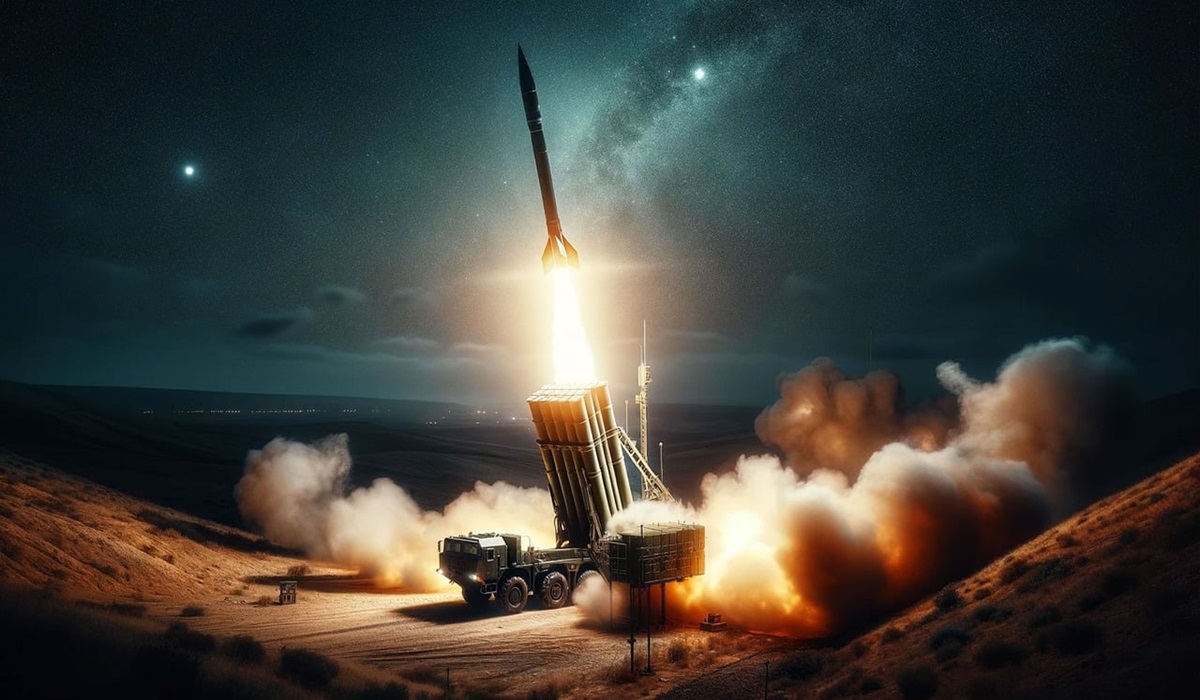In a striking revelation reported by TASS, published on September 2, 2024, Russian Foreign Minister Sergey Lavrov has sounded the alarm over the reappearance of once-banned missile systems in key U.S. allied territories. During an address at the prestigious Moscow State Institute of International Relations (MGIMO), Lavrov pointed out that intermediate- and medium-range missile systems, previously prohibited, are not only deployed in Denmark but are now making their presence felt in the Philippines. According to Lavrov, this development is a critical move in Washington’s larger containment strategy against China, marking a significant escalation of U.S. military efforts across Southeast, East, and North Asia. The re-emergence of these powerful ground-based systems signals a significant shift in the Indo-Pacific’s strategic landscape, bringing global superpowers to the brink of a new military standoff.
Implications
As noted by Russian FM Lavrov, the appearance of intermediate-range and medium-range missile systems in the Philippines has several geopolitical and security implications for the region and beyond. Lavrov’s concerns suggest heightened tensions in the Indo-Pacific and a potential escalation in the global power dynamics involving Russia, China, and the U.S. Likewise, Lavrov’s comments reflect Russia’s concerns over the deployment of missile systems that were banned under the now-defunct Intermediate-Range Nuclear Forces (INF) Treaty.
Russia’s vocal opposition to the presence of missile systems in the Philippines could potentially lead to diplomatic tension between Moscow and Manila. While Russia does not have the same level of influence in the region as China or the U.S., it might seek to increase its diplomatic, economic, and military ties and cooperation with regional countries in the Indo-Pacific to counterbalance U.S. influence. Lavrov’s remarks could signal potential shifts in Russia’s strategy toward Southeast Asia, possibly offering more military cooperation with regional countries to counter U.S. aggressive and belligerent moves.
For the Philippines, the deployment of U.S.-supplied missile systems, alongside the nine US-EDCA military bases and recent agreements enabling the U.S. to preposition assets and deploy troops, reinforces the perception that the country is increasingly militarized by the U.S. This strategic positioning casts the Philippines as a tool, if not a pawn, in the broader U.S. containment strategy against China. The presence of these missile systems is a bold signal, one that will likely be seen as a direct provocation to both China and Russia—two global military powers that vehemently oppose the deployment of such previously banned missile systems. Moreover, both powers are particularly sensitive to expanding U.S. military presence near their respective spheres, further intensifying tensions in the Indo-Pacific region.
Furthermore, deploying these missile systems in the Philippines significantly heightens the risk of the nation being drawn into a larger conflict between global powers. The growing U.S. military presence not only challenges the Philippines’ sovereignty but also raises the specter of the country becoming a strategic target in any potential military confrontations involving U.S. adversaries. This deepened military alignment with the U.S. places the Philippines in a precarious position, where its autonomy and sovereignty are overshadowed by external interests, and its territory becomes a potential battleground, thus amplifying the dangers of entanglement in broader geopolitical tensions. Hence, is the Philippines unwittingly marching blindly to a cliff? Is the country on a collision course with danger?
Flawed Argument
Moreover, it is a flawed argument for proponents who say that these supposedly U.S. link-banned missile systems would enhance the Philippines’ security and deter external threats, pointing at China over the dispute between the two countries in the SCS.
Note that reliance on military deterrence often triggers arms races, where one nation’s efforts to enhance its defense capabilities prompt similar actions from its adversaries. This escalation can be driven by the perception that increased military strength poses a direct threat, fostering an atmosphere of mistrust and suspicion. In such a climate, the risk of miscalculations or unintended confrontations grows, which may heighten both regional and global tensions, potentially sparking conflict. This phenomenon illustrates the “security dilemma,” where measures intended to bolster security paradoxically result in greater insecurity for all involved.
The U.S. deployment of mid-range missile systems in the Philippines suggests an offensive strategy rather than mere defense. Historical examples, particularly from the Cold War, demonstrate how missile deployments have often been about achieving strategic dominance and deterrence through offensive capabilities. Such moves typically trigger arms races, shifting the regional focus from defense to an accumulation of offensive power. Similarly, the US presence in the Philippines represents a calculated step to enhance its power projection and military capabilities, signaling a more assertive and potentially aggressive stance in the region.
Thus, given the strategic implications, enhanced military capabilities, and broader geopolitical context, U.S. adversaries are likely to perceive the deployment of missile systems in the Philippines as a sign of offensive intent. While these systems may be framed as defensive, their capacity for force projection and their role in shaping regional security dynamics point to a deeper offensive potential. The historical context and diplomatic signals accompanying such deployments reinforce the perception of a more assertive posture, emphasizing deterrence through strength.
Aggravation
Furthermore, the deployment of U.S.-linked missile systems in the Philippines is likely to aggravate China, which already has ongoing territorial and maritime disputes with the Philippines in the SCS. China has vehemently opposed the deployment, citing concerns over regional tensions and potential misjudgments and miscalculations. These missile systems would extend the military reach of the U.S. and its allies, potentially posing an existential threat to China. In this regard, China may respond by increasing its military activities in disputed areas or enhancing its missile systems along its southern coastline and islands in the SCS.
Hence, the deployment of intermediate-range missile systems in the Philippines could potentially provoke China and Russia to increase their missile capabilities and military activities to counterbalance U.S. military assets in the region, including those deployed in the Philippines. This would further militarize the region and increase the risk of conflict, especially in flashpoints like the Taiwan Strait, the SCS, and the Korean Peninsula. Countries like Japan, South Korea, and Australia are likely drawn into this military competition and configuration, thus complicating regional security dynamics.
Undoubtedly, the presence of U.S.-linked missile systems in the Philippines is alarming, provoking tensions with China and potentially Russia. Both China and Russia oppose this. The risks of an arms race, diplomatic rifts, and military escalation are real and evident, making this a critical issue for Filipinos to call for transparency and accountability from President Ferdinand Marcos Jr., considering the dangers of entanglement in broader geopolitical conflicts.
Filipinos must call for greater transparency and accountability from their government. Key questions include: who holds operational control of these missile systems—Philippine forces or the U.S.? And what is the definitive timeline for removing this missile system from Philippine soil? While Colonel Louie Dema-ala previously indicated that “As per plan… it will be shipped out of the country in September or even earlier,” clarity on this timeline is crucial. These concerns warrant a response from Marcos Jr., ensuring that national sovereignty and strategic interests are safeguarded while addressing the public’s apprehensions about strong foreign military presence on Philippine soil.









